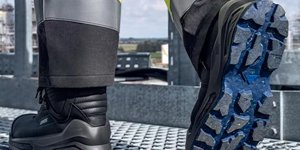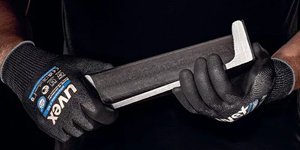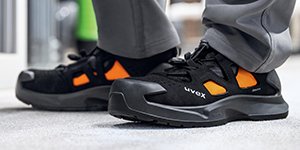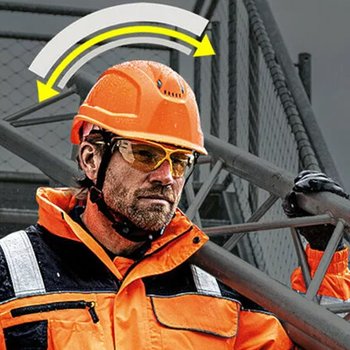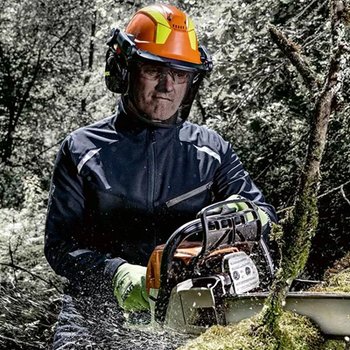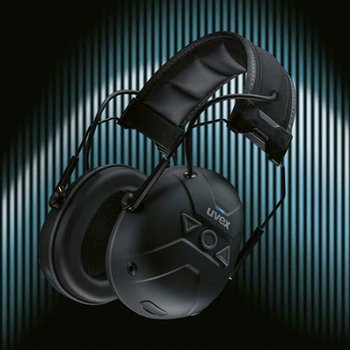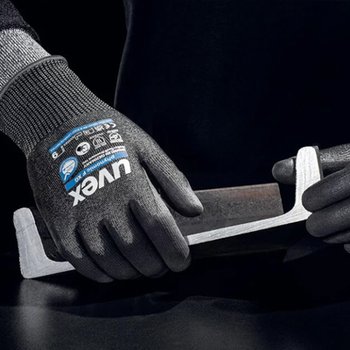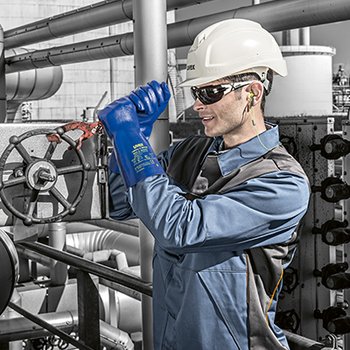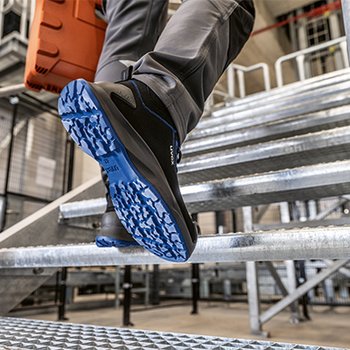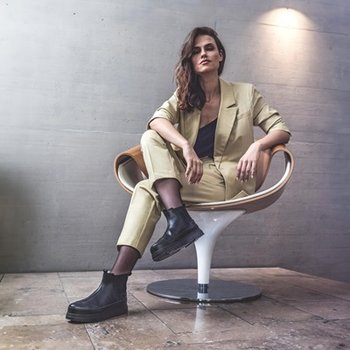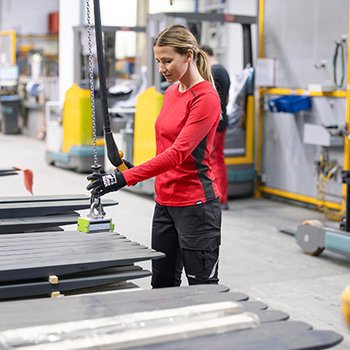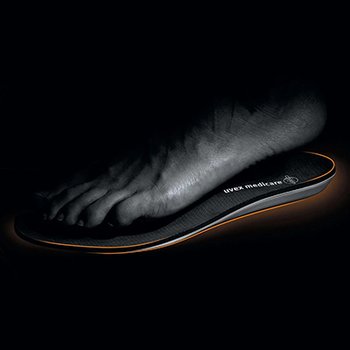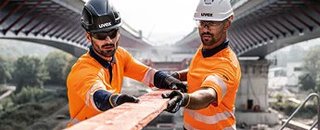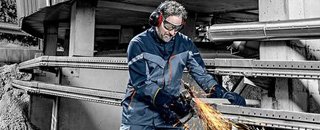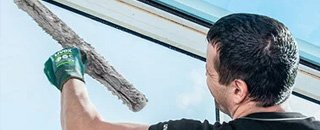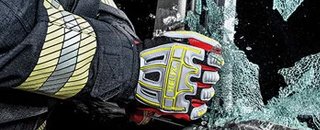
Questions and answers on the subject of disposable coveralls
Non-woven fabrics are produced in different processes that affect the characteristics of the material.
Spunbond fabric provides stability. Meltblown non-woven fabric, on the other hand, consists of finer fibres, meaning it has a larger surface and therefore guarantees a good filtration effect. However, meltblown non-woven fabric is less stable.
For protective clothing made entirely from non-woven fabric, a kind of sandwich construction is therefore used, consisting of individual layers, which are consolidated accordingly: Outer spunbond for stability and inner meltblown, SMS for short, or variants thereof (e.g. SMMS, SSMMS etc.). If the material is used with a microporous film, the non-woven layer may consist of spunbond fabric or SMS.
As the name suggests, disposable items are not suitable for repeated use. In addition to disposable chemical protection, our range also offers a collection of reusable chemical protection products. Here you will find a pre-filtered selection of reusable chemical protection products.
There are lots of different chemical protection suits available from the uvex shop – and it's not always easy to choose the right one. Which overalls conform with your prescribed standards and which offer the level of occupational safety needed for the work you do? A number of aspects play an important role when choosing the perfect protective clothing: fit, comfort, ease of use and the ability to combine it with other items of PPE. Read more about this in our blog post.
In order to guarantee optimal protection for individual hazardous areas, the European Union has defined harmonised standards for different protection classes (also called types). This makes it much easier to choose the right protective clothing. The type of protection indicates the kind of exposure for which the suit is suitable:
Type 3 = liquid-tight
Type 4 = spray-tight
Type 6 = limited spray-tight
Type 5 = dust-tight
Even more information about the protection classes can be found in our blog post.
If overalls are certified in accordance with EN 14126, they meet the performance requirements against infectious agents and may be marked with the "B". Here, it is important to note that the defined test procedures focus on the medium that contains the micro-organisms, such as fluids, aerosols or solid dust particles and not on specific viruses or bacteria. Overalls with taped seams provide a higher level of protection as the micro-organisms are small enough to penetrate through the tiny needle holes along the seam.
The areas of application are extremely varied and depend on the type of respective overalls. While SMS overalls with type 5/6 certification are more suitable for dry applications at higher temperatures, type 3 liquid-tight overalls are suitable for working with concentrated chemicals or for handling large amounts of fluids. It is important to ensure that the overalls meet the requirement, especially when using concentrated and/or toxic chemicals. Please use the following graphic as a guide.
Currently, only overall uvex 5/6 comfort (98710) has been tested accordingly and achieves class 8 in accordance with ISO 14644-1. You can find out more by reading our technical datasheet.
No, disposable protective overalls cannot be customised at a later point in time.
The way in which disposable protective overalls must be disposed depends on the type of contamination. If the contamination does not pose any risks, the products can be disposed of by incineration or landfill without endangering the environment. In the case of heavy contamination or contamination with toxic substances during use, special disposal rules come into force.
uvex disposable products must be stored in a dry place, in their original packaging and between 15° and 25°C without UV light. If these conditions are met, they will have a 5 year shelf life.
With chemical-resistant clothing, the penetration time or permeation time is an important indicator. It states how long it will take for a particular chemical to penetrate the barrier. The permeation data is therefore influenced by the thickness and material of the barrier to be penetrated. Our online database CES provides details of the permeation data. Here you can search for the respective chemicals and display the corresponding protection levels for overalls and/or gloves.
You can find technical data sheets here too:
uvex 3B chem classic
uvex 3B chem light
No, these are not certified products, as accessories such as overshoes, cuffs and hoods cannot be certified. However, as they are made from the same material as the respective overalls, the corresponding data can be referenced.
Please do not also hesitate to consult our technical fact sheets:
Overboots
Accessories
According to the Robert Koch Institute, the most important and effective measures are: "Self-isolation if you are ill, practising good hand hygiene, complying with rules relating to coughing and sneezing, and practising social distancing (staying at least 1.5 metres away from others)". If you are treating a patient, the authorities recommend measures including wearing overalls that are certified in accordance with EN 14126. Further information can be obtained directly from the Robert Koch Institute or the World Health Organization.
To ensure that the disposable clothing is able to deliver its full protective effect, it is crucial to put it on and take it off correctly. Certain steps need to be carried out in a set order. You may need to get someone to help you. In the following – and in our blog post – we explain what to look out for:
Putting the PPE on:
Before putting the protective suit on, it is essential to check it for any defects such as open seams, damaged zips or other faults that could impair the protective effect of the garment.
1. Remove any jewellery and watches
2. Step into the overalls and zip up to the hips
3. Put on your boots
4. Put on your respirator and ensure that the seal is tight
5. Put on your safety glasses
6. Pull the hood of the overalls over your head
7. Zip up the garment all the way to the top
8. Press the flap into place to cover your chin and the zip fastener
9. Put on your safety gloves and pull up over your sleeves
10. Check that the overalls will not tear even if you stretch or squat down
Taking the PPE off:
1. Disinfect your safety gloves
2. Pull the hood down
3. Peel the overalls off over the shoulders and down to hip height, ensuring that the inside of the overalls is facing the outside. At the same time, pull your arms out of the sleeves (ask a second person wearing safety gloves and respirator to help if required)
4. As you peel off the lower half of the overalls, the boots are pulled off
5. Peel off the safety gloves by pulling them inside out
6.Take your glasses off from back to front
7. Remove your respirator in the same way
8. Disinfect your hands and then thoroughly wash your hands, face and any other potentially contaminated areas of skin using water and a disinfecting wash
A3 posters are also available for printing - Please note that the selection of additional PPE shown is an example and must be adapted to your requirements:
Type 5/6
Type 3

